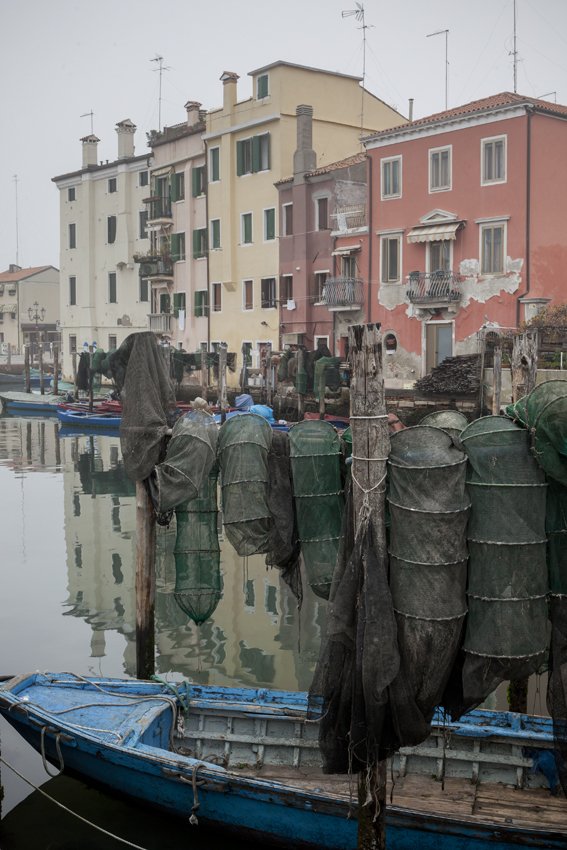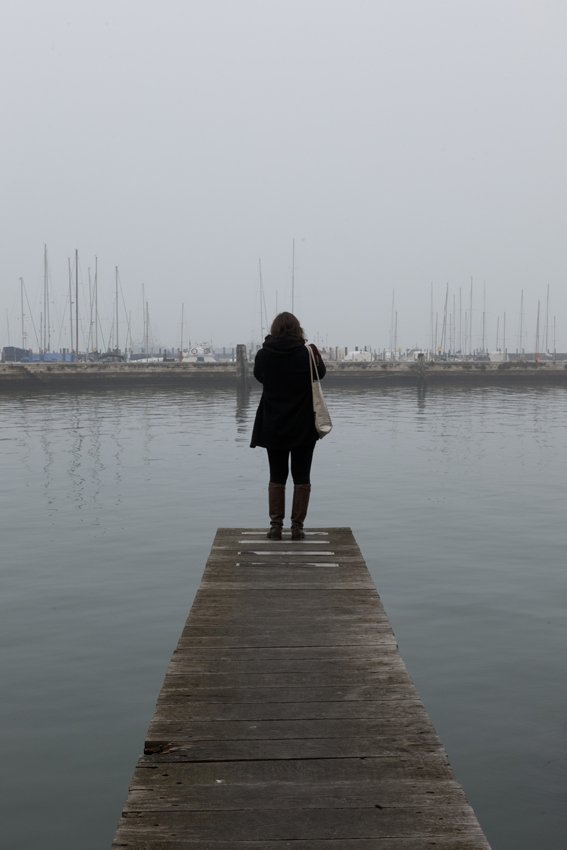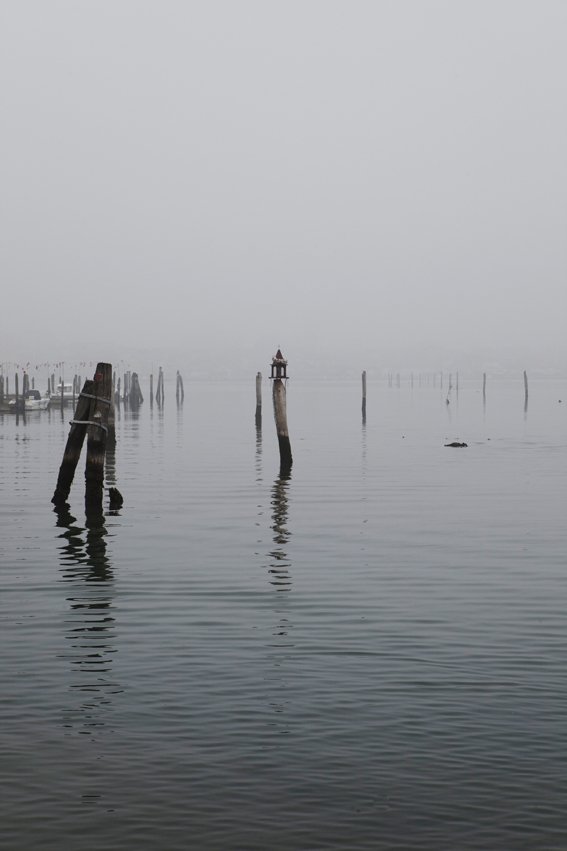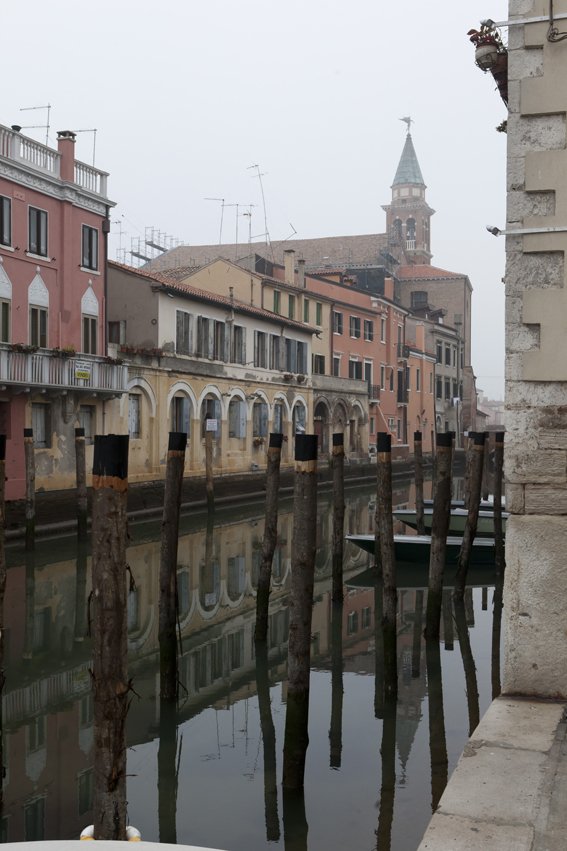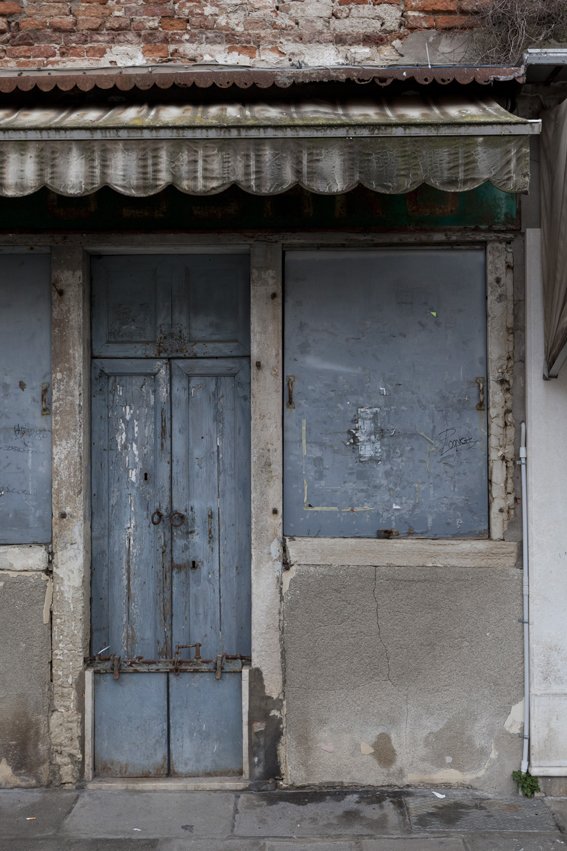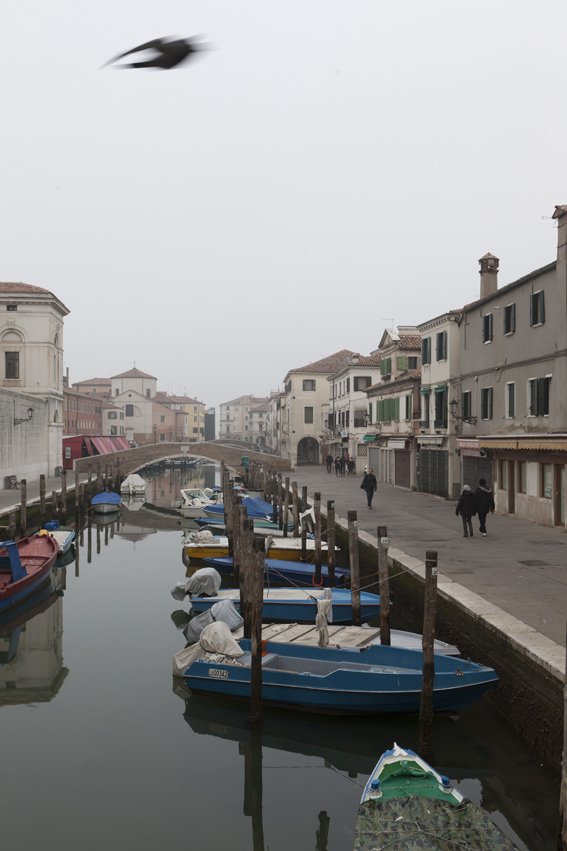The Invisible Cities: Strolling Around Chioggia
& "Scartosso de frittolin" - Fried fish in a paper cone
For several days now, there has been a persistent thick fog here, both day and night. The landscape looks as if it has been covered with a blanket causing everything to seemingly fall asleep. Even the people seem asleep. Every object seems to have been swallowed by the fog, and distant contours appear like a vision in a dream.
This reminds me of the fantastic “Invisible Cities” by Calvino. All the cities have something from just one city which cannot be described. Magic has been possible only for a place that is unique and special, and where man’s needs and fantasy have come together to challenge nature.
Bridge after bridge connecting island after island which would otherwise have been far away and apart.
Venice is built on several small islands but from above, Venice looks like a compact city because its four hundred bridges are invisible; its shape also resembles a big fish, like that of a species that live in the lagoon. It was only in 1933 that a long road bridge was built to connect Venice to the mainland and we sometimes forget that before Venice was surrounded completely by water.
Water is an ever-present element in my land; the sea, the lagoon, the inlets, the rivers, all this water is converted into humidity and fog….and here, the fog has its own smell and covers everything.
To me, the invisible cities are those that appear to us suddenly; they could be part of a roof without its walls, or just the top of a tower bell that seems like it’s flying in the sky; a part of an arch with no pillars, lampshades hanging from nowhere, courtyards with no gates, houses with steps that die off into the canals.
There are islands that seem to be hanging between the sea and the sky, with no bridges to reach them, or sometimes, the bridge seems to be cut off, swallowed by the fog and by the early darkness of the winter night. Even the rounded full moon ends up being blurred.
The big invisible city, Venice, that can be found hidden in all the other narrated invisible cities, actually has a smaller “sister” that is not so far away and is lapped by the same sea: Chioggia. It is also known as “little Venice” and, like Venice, is connected to the mainland by a long bridge from which it is possible to enjoy nice views. The historic part of Chioggia is crossed by several bridges and has side streets with several porticos. This “little Venice” is quite a colorful place and maintains the typical picturesque aspect of a seaside town. Many fishing boats are harbored there and the inhabitants, most of whom are fishermen, have the faces of those who spend many hours out in the air and sun.
Their way of speaking has a “swinging” sound – could this be because they spend long hours in their boats at sea?
Chioggia is a fishing town with colorful boats anchored along the canals, but it comes as a surprise to see that there are also cars, buses, and mopeds running along the side streets. It seems like an attempt to recreate the original one as if everything in this town was a set-up, but the differences are useful for avoiding any possibility of comparing or mistaking the two cities.
In Chioggia, you are still able to see the fishermen repairing their fishing nets in front of their homes, and, immediately, the image of the abundance of fish springs to mind. Freshly caught fish….what a vision!
If before I could smell only the fog, now I can smell lovely seafood dishes. And when you stroll around this small “Invisible” city, maybe in the January mist, immediately, such nice smells hit you, and that is enough to awaken your appetite like that of any fisherman returning home after a trip fishing all night. Thus, the porticos are good shelter from the humidity that gets into the bones, and the image of a winged lion atop a Venetian-Byzantine column from the XII century gives us the illusion of being in another little Venice, causing us to dream and desire something nice and hot to eat, something like fried fish takeaway in a small paper cone.
The yellowish paper used for the cone is made from straw and it is, in fact, called “paglia” (straw). It was used long ago and it is still used today at the “frittolin”, an unpretentious takeaway place. Go to the “frittolin” for something to eat while walking around or while watching the sneaky seagulls flying in the sky, or simply while looking for the way back home and crossing that long bridge, without which this would only be one island of the many other cities which, sometimes, in winter, really become invisible. Chioggia, the smaller of the imposing lady, Venice, both share the same seaside smell and, in winter, the sound of footsteps on their bridges.
In Chioggia and Venice, and in the surrounding towns, “scartosso de frittolin” is a mix of small fried seafood served in a paper cone to take away. It’s the best of Venetian street food and something you should try as soon as you arrive here.
You can even make good fried seafood at home if you follow some important steps strictly.
Here are some suggestions:
Always use fresh seafood instead of frozen seafood
Use good quality oil suitable for deep frying. The best is peanut oil because its flavor doesn’t prevail on the food you fry.
If you don’t use a deep fryer, the best frying pan to use is an iron one because it allows the oil to heat gradually and evenly.
Use a lot of oil for deep frying. The food should be floating, in fact, the more oil you use and less heavy the fried food will be.
Never put salt on food before frying it or you will spoil its golden crust.
Fry the seafood when the oil reaches 180° and as soon as you put the fish into the pan, it will sizzle. If it doesn’t, it means the oil is not hot enough.
Eat the deep-fried seafood when it is still hot.
SCARTOSSO DE FRITTOLIN-FRIED FISH IN A PAPER CONE
* A Venetian paper cone isn't very large and can easily be held in one hand while walking and using a small wooden fork for the seafood. The quantity depends on how much fish you wish to prepare, the type of seafood and the size of your paper cone, but usually, for 1 person, this is what you need:
Ingredients
6-8 medium-large squid rings
3-4 small cuttlefish
3-4 sardines
2-3 prawns
10 whitebaits
1 lemon
plain flour
salt
peanut oil
Instructions:
Clean the seafood, rinse well, and let it drain. Pat dry if necessary (it's important that the seafood is well drained and dry).
On a paper towel put some flour and lay the seafood on top of it. Gently roll the seafood on the flour to coat it evenly.
Sift the seafood to get rid of the excessive flour.
Heat the oil in a frying pan to about 180°.
Fry the seafood in small batches. Usually, it takes 2-3 minutes for it to become golden brown and fully cooked.
Scoop the seafood out using a perforated spoon and drain on a paper towel.
Add salt and two lemon wedges to put into the paper cone*
*For the paper cone you should use untreated straw paper. It should be thick, strong, and rough but not too absorbent.


